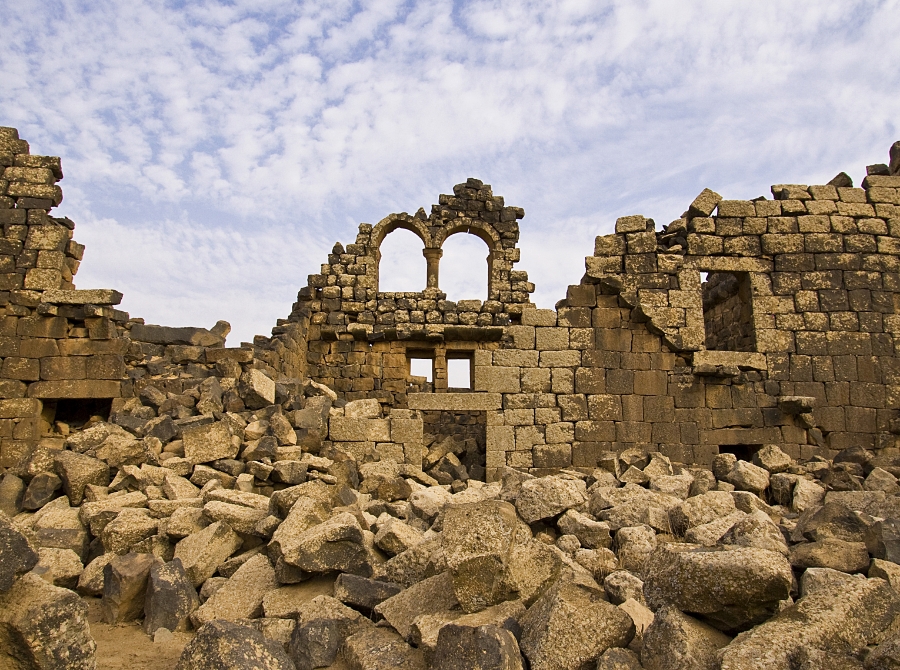

Umm al-Jimal is located in the heart of the Jordanian desert, 15 km east of Mafraq. It was built with black volcanic stone left by volcanoes in that area.
In ancient times, Umm al-Jimal was known as a commercial city whose towers, houses, churches, ponds, squares, gates and roads left many evidences of the succession of civilizations in Jordan.
The secret of Umm al-Jimal, according to its historical landmarks, monuments and beauty, lies in its Christianity, as evidenced by the presence of fifteen churches, the oldest of which is the Julian Church, which dates back to 345 AD. Due to the religious and historical importance of Umm al-Jimal, it was included last month on the UNESCO World Heritage List.
The Nabataeans established Umm al-Jimal, originally called Thantia, as a rest stop for trade caravans between Petra, the capital of the Nabataean Kingdom, and the Levant. It is built of black volcanic stone left by volcanoes, and Nabataean inscriptions and graves can be seen, most of which are burial places for noble families at that time.
The Christian history in the Umm al-Jimal area dates back to 557 AD, when the city's cathedral was inaugurated. Christian delegations came from various neighboring dioceses in Jordan, Syria, and Palestine.
It is noteworthy that the Madaba mosaic map, which dates back to around 565 AD, mentioned and drew the city of Umm al-Jimal, its cathedral, and other important cities and centers in the Jordanian desert.
Umm al-Jimal contains fifteen churches, which is evidence of the prosperity of Christianity and its ancient origins, and the piety of its people and their love for Christ. The church authority always paid attention to the Christians arriving with all the caravans, and the oldest church is the Julian Church, which dates back to 345 AD.
The history of Umm al-Jimal in the Byzantine era tells of the existence of a military barracks that was transformed into a monastery that included a six-story tower that was sixteen meters high, and its balconies protruded from each of its four sides, on which was written the name of one of the archangels: Gabriel, Michael, and Raphael. The barracks is a rectangular building with a church of three aisles and around the church is an open courtyard surrounded by rooms.
The Christian heritage is also evident in the western church located near the Gate of Commodus. Its main entrance is about twenty-four meters long, and its nave is about twenty-two meters long and sixteen meters wide. Next to the sanctuary are two arches with crosses engraved on them. The church is surrounded by two aisles from the north and south, and between the nave of the church and the aisles are two rows of arches.
As for the rest of the churches, some take the form of a large hall, and some contain a nave in the middle separated from the side aisles by arches standing on bases.
Despite the terrible earthquake that occurred in 746, the remains of Umm al-Jimal remain evidence of its glory and Christian depth in history.